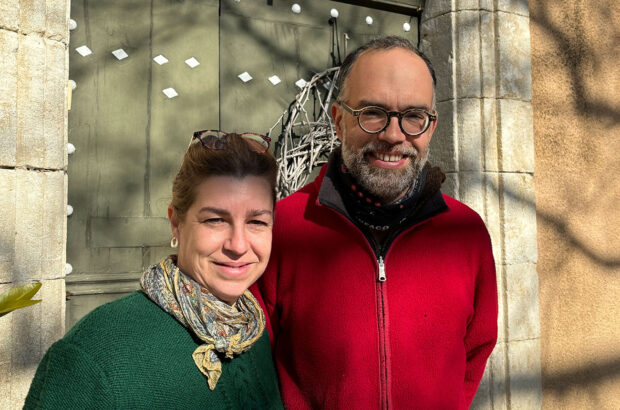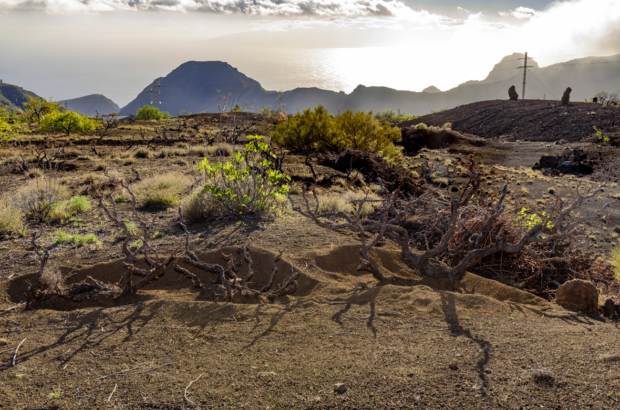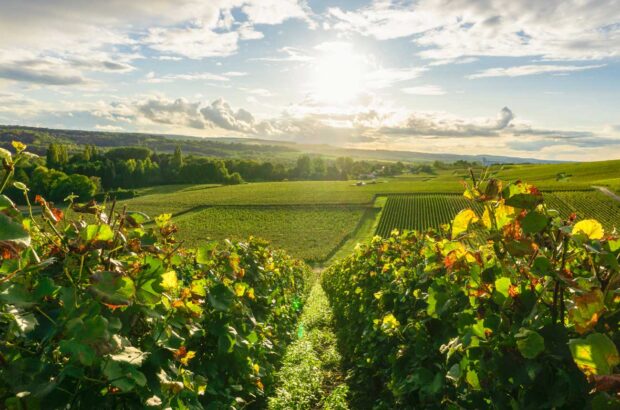Jeffrey Davies: negociant, wine journalist and head of a company with a turnover north of 6 million Euros. Andrew Jefford meets an eternal optimist, who is brimming with enthusiasm for 'garage' wines and the Bordeaux avant-garde...
Bordeaux, 1976. Concorde has just taken off for its first commercial flight; later this year Jimmy Carter will be elected president of the USA. The Médoc proprietors are convinced they have just made, in 1975, one of their greatest vintages, after a dismal half-decade of bubble, bust, scandal, cold summers and thin wines.
They receive a letter from an American oenology student at Bordeaux University. He asks to taste every vintage of their wine between 1955 and 1975, at 11am on an appointed day, at a table with a white tablecloth in a slightly warmer environment than the chai. They reach for the telephone and call his supervisor, Professor Emile Peynaud, to ask for an explanation. Most are indignant; some use expletives. Peynaud takes the flak. ‘You should do it,’ he counters. ‘You probably never do it for yourselves either. You might learn something about your own wines.’ In the end, around 60 estates agree – and Jeffrey Davies’ long and diverse career begins.
He was the self-confident student who became the local wine journalist who first influenced Robert Parker’s views on Bordeaux. After spells as a wine importer based in Kansas City, Missouri, a Gault Millau reporter, and the unlikely creator and manager of a French aerospace components factory, Davies became (from 1991) an independent, self-financed Bordeaux négociant – and a wryly humorous observer of the Bordeaux scene.
Trading places
If you guess it’d be difficult for an American outside to trade on the Place de Bordeaux, you’d be right. The game of allocations does not favour newcomers. Signature Selections, Davies’ company, turns over €6m (£5m) a year ‘with my two assistants and the 35-hour week I do every three days’, and its speciality has always been new names, up-andcoming properties and outstanding values. As such, Davies is an unapologetic enthusiast for Bordeaux’s avant-garde. ‘I don’t really have any time for the attitude that Bordeaux was better way back when. We’ve come so far in terms of vineyard management, winemaking, wine ageing and cellar hygiene. These things mean that catastrophic vintages are a thing of the past – and remember we used to have a lot of them.’ He reels off a list: ‘1954, ’56, ’57, ’58, ’60, ’63, ’65, ’68, ’69, ’72, ’74, ’77, ’81, ’84, ’87, ’91, ’92, ’93. Even 2013 isn’t like that. Yes, it’s an extraordinarily challenging year and you have to be very selective, but good wines have been made.’
Davies has always been an enthusiast for ‘garage’ wines, and especially the boundary-pushing work of producers such as Jean-Luc Thunevin of Valandraud or Michel Gracia of the eponymous St-Emilion château, and of consultants such as his close friend Michel Rolland and the straight-talking outsider, Stéphane Derenoncourt. ‘In really great terroir, you can take 40 or 45 hectolitres/hectares (hl/ha) and still make great wine. But those involved in the garage movement were mostly working with lesser terroirs. Their hard work showed that by dropping the yield to 25 or 30 hl/ha, you can still make very good or even great wine. Okay, we’re rolling back from some of the excessive things that used to be done a decade ago – but if we hadn’t pushed the envelope, how would we know?’
Walking the fields
The most significant change he’s observed during his working lifetime concerns the understanding of tannins. ‘When I began here, winemakers would look at sugar, and would check to see what the level of acidity was; those were the two parameters. No one walked through the vineyards, looked at the colour of the seeds, chewed the skins. Now we understand that the key decision when it comes to harvesting red Bordeaux is assessing phenological ripeness – and we’ve seen tannins replace acidity as the key factor in how well the wines age. That’s why we have wines which are enjoyable young, yet also age gracefully. I haven’t seen a refractometer [for measuring sugar] here in 10 years. It’s just not important any more.’
Of course, négociants face in two directions – not merely scrutinising production, but also looking out towards the market. Davies, here, is less sanguine. ‘There are some very sick balance sheets in Bordeaux right now, and 2013 isn’t going to help matters. The top châteaux, who run on net profits of anywhere between 60% and 95%, are fine. But I wouldn’t like to be a négociant sitting on a lot of first growths from 2009 and 2010, particularly Lafite, that they’ve paid for and seen fall in value by nearly 50%. That wasn’t what they paid; nonetheless a huge imaginary return has volatilised. There are big problems in China, where many smaller importers who thought they were going to get rich quick have quit. Even the biggest are offering to sell back some of their ’09s and most of their ’10s, merely to cover their debt positions. The largest négociants will take advantage of that, but Bordeaux as a whole will struggle to bounce back.’
What, finally, about en primeur? There, too, this natural optimist sounds a note of caution. ‘What does the system do? It finances the châteaux, who are those least in need of financing. Everyone is chasing the same customers, and the number of those customers is not infinite. The system is testing its limits right now. If there’s no exciting vintage in 2014,’ he says with a seasoned smile, ‘things are going to get very… interesting.’
Davies’ top 12 for value:
Andrew Jefford asks Jeffrey Davies to list the 12 red wines he feels offer the best value from Bordeaux in mid-2014. Here (in alphabetical order) are his insider picks.
- Château Belle-Vue, Haut-Médoc CB
- Château Bolaire, Bordeaux
- Château Cambon La Pelouse, L’Aura, Margaux
- Château Feytit-Clinet, Pomerol
- Château Fleur Cardinale, St-Emilion GCC
- Château Joanin-Bécot, Côtes de Castillon
- Château Labégorce, Margaux
- Château La Fleur Morange, Mathilde, St-Emilion GCC
- Château La Roncheraie, Côtes de Castillon
- Château Les Carmes Haut-Brion, Pessac-Léognan
- Château Pédesclaux, Pauillac 5CC
- Château Tour St-Christophe, St-Emilion
Written by Andrew Jefford







